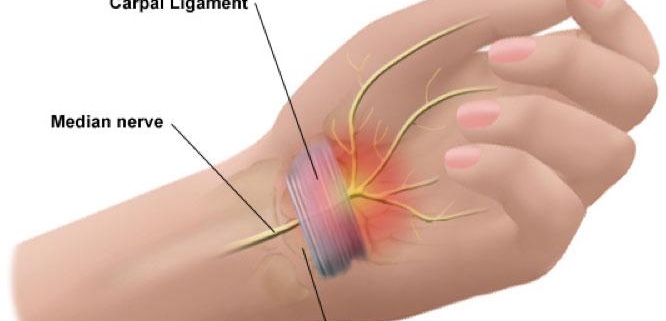
Open Carpal Tunnel Release
Overview
Carpal tunnel syndrome (CTS) is a common condition that affects millions of people worldwide. In simple terms, carpal tunnel syndrome is a condition that occurs when a major nerve in the hand, the median nerve, is squeezed or compressed as it travels through the wrist. This nerve is responsible for sensation and movement in parts of the hand. An open carpal tunnel release, commonly referred to as carpal tunnel surgery, is often recommended for severe cases of this condition.
Types
While carpal tunnel syndrome is a specific condition, the treatment options vary depending on the severity of symptoms. Nonsurgical methods are often the first step, involving lifestyle changes, exercises, and medication. If nonsurgical treatment isn’t effective, surgical treatment becomes an option. There are two main types of surgical procedures: open carpal tunnel release and endoscopic carpal tunnel release. This guide focuses on the open carpal tunnel release, which involves making a larger incision in the palm to access the carpal tunnel.
Causes
The exact cause of carpal tunnel syndrome remains unclear. However, it seems to result from a combination of factors that increase the pressure on the median nerve and tendons in the carpal tunnel. Risk factors include:
– Repetitive hand use
– Hand and wrist position
– Certain health conditions (like diabetes, rheumatoid arthritis, thyroid conditions)
– Pregnancy
– Obesity
Symptoms
Symptoms of carpal tunnel syndrome include:
– Tingling or numbness
– Pain in your hand and fingers
– Weakness in hand muscles
These symptoms often occur in the thumb, index, and middle fingers, and are usually worse at night.
Diagnosis
A doctor diagnoses carpal tunnel syndrome based on:
– Patient history
– Physical examination of the hand, wrist, shoulder, and neck
- Electrodiagnostic tests
– X-rays and ultrasound
Treatment Options
Treatment for Carpal Tunnel Syndrome ranges from nonsurgical methods to surgical intervention.
Nonsurgical methods:
– Wrist splinting
– Avoidance of certain activities
– Nonsteroidal anti-inflammatory drugs (NSAIDs)
– Steroid injections
If these aren’t effective, surgery may be proposed including endoscopic surgery or open carpal tunnel release. This guide dives deeper into the latter.
Living With Open Carpal Tunnel Release
Open carpal tunnel release has a high success rate and most patients have a significant reduction in symptoms and improvement in hand function. However, post-surgery, it’s important to:
– Rest and elevate your hand for a few days to minimize swelling.
– Gently move your fingers to reduce stiffness.
– Attend physical therapy if recommended by your surgeon.
– Take any prescribed medications correctly.
– Return for a scheduled follow-up appointment to remove stitches.
When To Seek Help
It’s recommended to seek medical help if over-the-counter treatments and lifestyle changes aren’t relieving your symptoms, and if you’re experiencing:
– Persistent pain
– Difficulty grasping or holding objects
– Disrupted sleep due to hand or wrist pain
– Worsening or non-improving symptoms over several weeks
open carpal tunnel release is a critical procedure for those with Carpal Tunnel Syndrome negatively impacting their quality of life. This procedure can significantly reduce the symptoms and improve hand functions. Like every surgical procedure, it comes with potential risks and complications, discuss them openly with your healthcare provider before making your decision.
